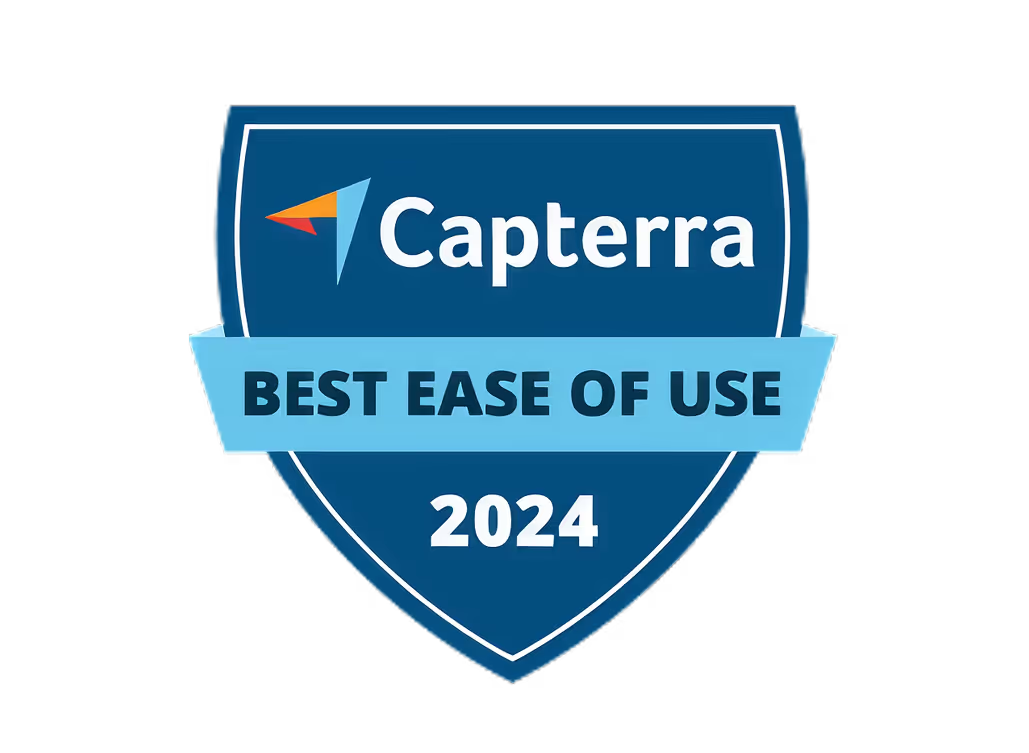10 Sustainable Video Production Strategies

Adopting eco-friendly practices in video production reduces your environmental impact, cuts costs, and enhances brand reputation. Here are 10 sustainable strategies:
- Use Renewable Energy Sources: Switch to solar, wind, or other natural power sources to eliminate emissions.
- Implement Digital Asset Management: Organize digital files centrally to reduce e-waste and avoid duplication.
- Opt for Energy-Efficient Equipment: Choose gear that consumes less power, lowering energy bills.
- Adopt Remote Production Techniques: Reduce travel, lodging, and on-site costs through remote collaboration.
- Design Sustainable Sets: Use recycled, renewable, or reusable materials to minimize waste.
- Reduce, Reuse, Recycle: Cut waste by reusing props, renting equipment, and recycling materials.
- Go Paperless: Utilize digital tools and cloud storage to eliminate paper usage.
- Optimize Transportation: Build local partnerships, track emissions, and use eco-friendly vehicles.
- Incorporate Sustainable Catering: Source local food, plan meals, use reusable items, and donate leftovers.
- Educate and Engage Your Crew: Train your team on green practices and encourage feedback.
By implementing these strategies, you can lower your carbon footprint, save money, and attract environmentally conscious audiences.
Related video from YouTube
1. Use Renewable Energy Sources
Switching to renewable energy sources can make video production greener. Using solar, wind, or other natural power can cut down on emissions and help the planet.
Environmental Impact
Traditional power sources like diesel generators release greenhouse gases. Renewable sources, such as solar power, produce no emissions. This switch can greatly reduce the carbon footprint of video production.
Ease of Implementation
Using renewable energy in video production is getting easier. Advances in technology have made solar panels and generators more portable and affordable. Many production companies now offer green energy solutions, making it simpler for filmmakers to make the switch.
Cost-Effectiveness
Though the initial cost of renewable energy might be high, it pays off over time. Solar panels and generators need little maintenance and last for years. As solar technology becomes cheaper, it becomes a more viable option. Lower energy costs mean more budget for other production needs.
2. Implement Digital Asset Management

Environmental Impact
The video production industry generates a lot of data, leading to high energy use and e-waste. A digital asset management (DAM) system can help reduce this. By organizing your digital files in one place, you cut down on physical storage needs and avoid data duplication, lowering your carbon footprint.
Ease of Implementation
Setting up a DAM system is straightforward. Many companies use cloud-based DAM solutions that are easy to scale and use. These systems store all your digital files in one place, making it simple to find and share them. You can also control who can access and edit files.
Cost-Effectiveness
Though a DAM system might seem expensive at first, it saves money over time. By reducing physical storage and avoiding data duplication, you save on energy costs and reduce waste. A DAM system also streamlines your workflow, saving time and resources spent searching for files, leading to cost savings and better productivity.
3. Opt for Energy-Efficient Equipment
Environmental Impact
Video production uses a lot of energy, which leads to high carbon emissions. Choosing energy-efficient equipment can help reduce this impact. By using gear that consumes less power, you can lower your carbon footprint.
Ease of Implementation
Switching to energy-efficient equipment is simple. Many manufacturers now offer eco-friendly options. From LED lights to low-power cameras, there are many choices that can help you use less energy without losing quality.
Cost-Effectiveness
Energy-efficient equipment might cost more upfront, but it saves money over time. Lower energy use means lower bills. Plus, these items often last longer, so you won't need to replace them as often.
4. Adopt Remote Production Techniques
Environmental Impact
Remote production cuts down on travel, lodging, and on-site costs, which lowers greenhouse gas emissions. It also allows for a more flexible work schedule, promoting a better work-life balance.
Ease of Implementation
With today's technology, remote production is easy to set up. Many companies offer remote services, and there are various tools for online collaboration. This makes it simple for teams to work together from different locations.
Cost-Effectiveness
Remote production saves money by reducing travel and on-site expenses. It also makes better use of resources, leading to cost savings and higher productivity. The money saved can be used to invest in greener equipment and practices.
5. Design Sustainable Sets
Designing sustainable sets is key to eco-friendly video production. This approach reduces waste and lowers the carbon footprint.
Environmental Impact
Using recycled, renewable, or reusable materials for sets can cut down on waste. These materials can be repurposed or upcycled after production. Working with set designers and builders to manage waste effectively also helps.
Ease of Implementation
Implementing sustainable set design is straightforward with the availability of eco-friendly materials. Production designers can collaborate with set builders to use these materials. Renting props and furniture instead of buying new items also reduces waste.
Cost-Effectiveness
Sustainable set design can save money over time. Using recycled or repurposed materials reduces the need for new resources. This approach also extends the life of sets, reducing the need for frequent replacements and repairs, which saves money and reduces environmental impact.
sbb-itb-606b7a1
6. Reduce, Reuse, Recycle
Environmental Impact
Video production creates a lot of waste, like props, set materials, and equipment. By reducing waste, reusing items, and recycling, productions can lower their impact on the planet.
Ease of Implementation
Implementing this strategy is simple. Start with a waste audit to find areas to cut waste. Use reusable props, rent equipment, and design sets with recyclable materials. Partner with recycling organizations to handle materials properly.
Cost-Effectiveness
This approach can save money. Reducing waste and reusing items cuts disposal costs and the need for new resources. Recycling can also bring in money from selling recyclable materials. Overall, this strategy helps save money and reduce waste.
7. Go Paperless
Environmental Impact
The film and TV industry uses a lot of paper for scripts, call sheets, and schedules. Going paperless can cut down on this waste. Did you know that 40% of the world's timber is used for paper? Plus, paper production uses a lot of water and often ends up in landfills, adding to greenhouse gas emissions.
Ease of Implementation
Switching to a paperless workflow is now easier with digital tools. Use digital platforms for communication and managing tasks to reduce the need for paper. Cloud storage allows teams to access and share documents easily, cutting down on physical storage and transport.
Cost-Effectiveness
Going paperless can save a lot of money. By cutting down on paper and photocopying costs, productions can use their budget more efficiently. Digital workflows also boost productivity, reduce errors, and improve teamwork. With paper and photocopying budgets ranging from $5,000 to $25,000, the savings are clear.
8. Optimize Transportation
Optimizing transportation is a key step in reducing the carbon footprint of video production. The film and TV industry relies heavily on transportation, which contributes significantly to greenhouse gas emissions. By adopting eco-friendly transportation strategies, productions can minimize their environmental impact.
Environmental Impact
Transportation accounts for a large part of a production's carbon footprint. The use of fossil fuels for transportation contributes to air pollution and climate change. By optimizing transportation, productions can significantly reduce their carbon emissions.
Ease of Implementation
Optimizing transportation is easier than you think. Productions can:
- Build relationships with local crews and suppliers to reduce travel.
- Track and offset transport emissions using emissions calculators.
- Choose hybrid or electric vehicles for transportation.
Cost-Effectiveness
Optimizing transportation is not only good for the environment but also cost-effective. By reducing travel and using local resources, productions can save money on transportation costs. Using eco-friendly transportation options can lead to long-term savings and improved brand reputation.
9. Incorporate Sustainable Catering
Incorporating sustainable catering practices into your video production can reduce waste and minimize your environmental footprint. Here are some ways to make your catering more eco-friendly:
Environmental Impact
The film and TV industry generates a lot of food waste. By adopting sustainable catering practices, you can reduce the amount of waste sent to landfills and lower your carbon footprint.
Ease of Implementation
Here are some simple steps to incorporate sustainable catering:
- Choose sustainable caterers: Opt for caterers who offer locally sourced food options.
- Plan meals: Reduce food waste by planning meals in advance and using leftovers.
- Use reusable items: Provide reusable plates, cups, and utensils to cut down on single-use plastics.
- Donate leftovers: Consider donating leftover food to local food banks or shelters.
Cost-Effectiveness
Sustainable catering can also save money. By reducing food waste and using locally sourced ingredients, you can cut catering costs. Additionally, adopting eco-friendly practices can improve your brand reputation and attract environmentally conscious clients.
10. Educate and Engage Your Crew
Educating and engaging your crew is key to making your video production greener. By involving your team, you ensure everyone works towards the same goal.
Environmental Impact
Unsustainable practices can harm the planet. Teaching your crew about green practices can reduce waste and lower your carbon footprint.
Ease of Implementation
Here are some simple steps to educate and engage your crew:
- Workshops or Training: Hold sessions to teach your crew about saving energy, reducing waste, and other green habits.
- Encourage Feedback: Ask your crew for ideas on how to be more eco-friendly.
- Lead by Example: Show your commitment to green practices by following them yourself.
Cost-Effectiveness
Teaching your crew about green practices can save money. Less waste and lower energy use mean lower costs. Plus, a green reputation can attract clients who care about the environment.
Greener Video Production for a Better Future
As we wrap up our look at eco-friendly video production methods, it's important to highlight why these practices matter. By using these methods, you help the planet, improve your brand's image, and cut costs.
Traditional video production can harm the environment through high energy use and waste. By adopting greener practices, you can lower your carbon footprint and promote responsible habits.
Here's a quick recap of the 10 strategies we've covered:
- Use Renewable Energy Sources: Switch to solar or wind power to cut emissions.
- Implement Digital Asset Management: Organize digital files to reduce e-waste.
- Opt for Energy-Efficient Equipment: Use gear that consumes less power.
- Adopt Remote Production Techniques: Reduce travel and on-site costs.
- Design Sustainable Sets: Use recycled or reusable materials.
- Reduce, Reuse, Recycle: Minimize waste by reusing and recycling materials.
- Go Paperless: Use digital tools to cut down on paper use.
- Optimize Transportation: Use local resources and eco-friendly vehicles.
- Incorporate Sustainable Catering: Choose local food and reduce waste.
- Educate and Engage Your Crew: Teach your team about green practices.


















